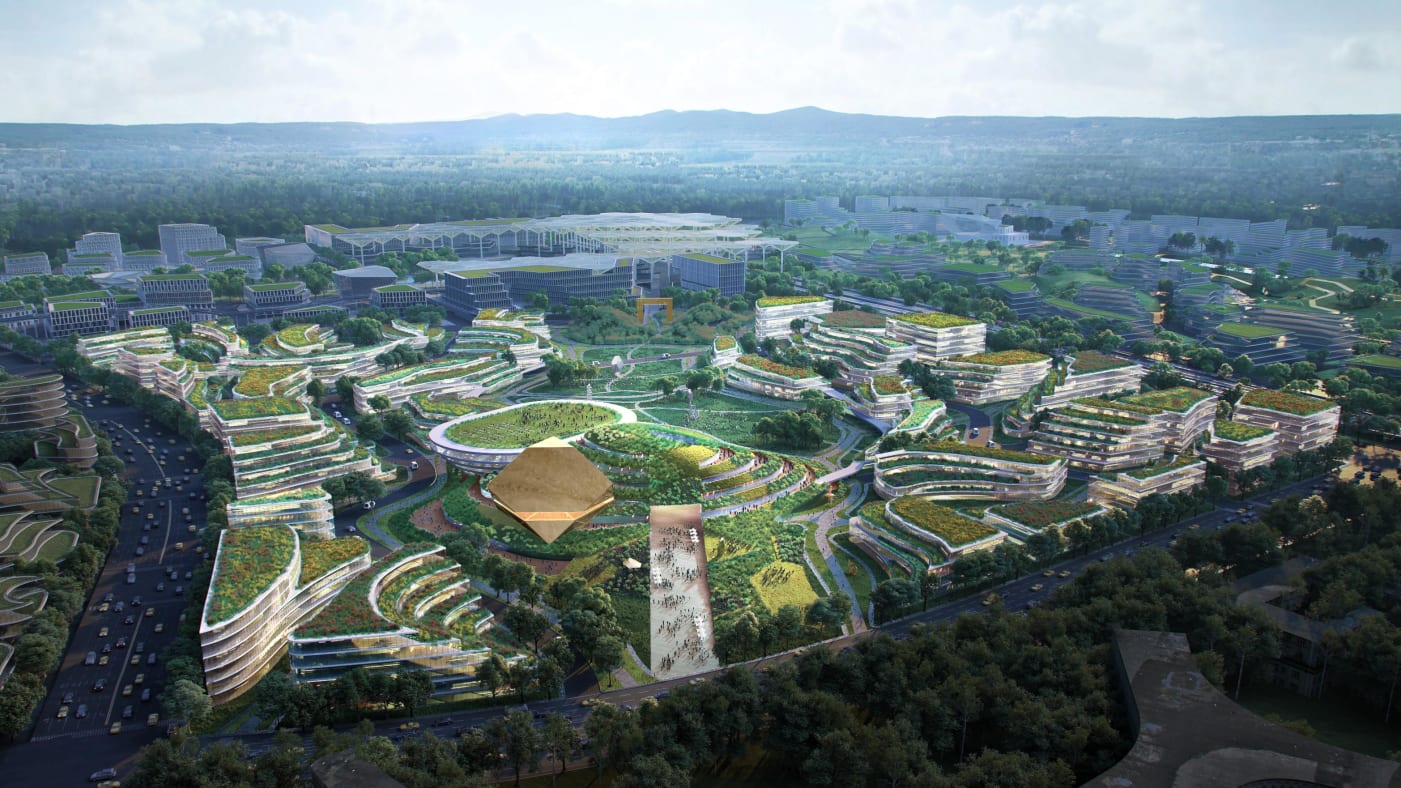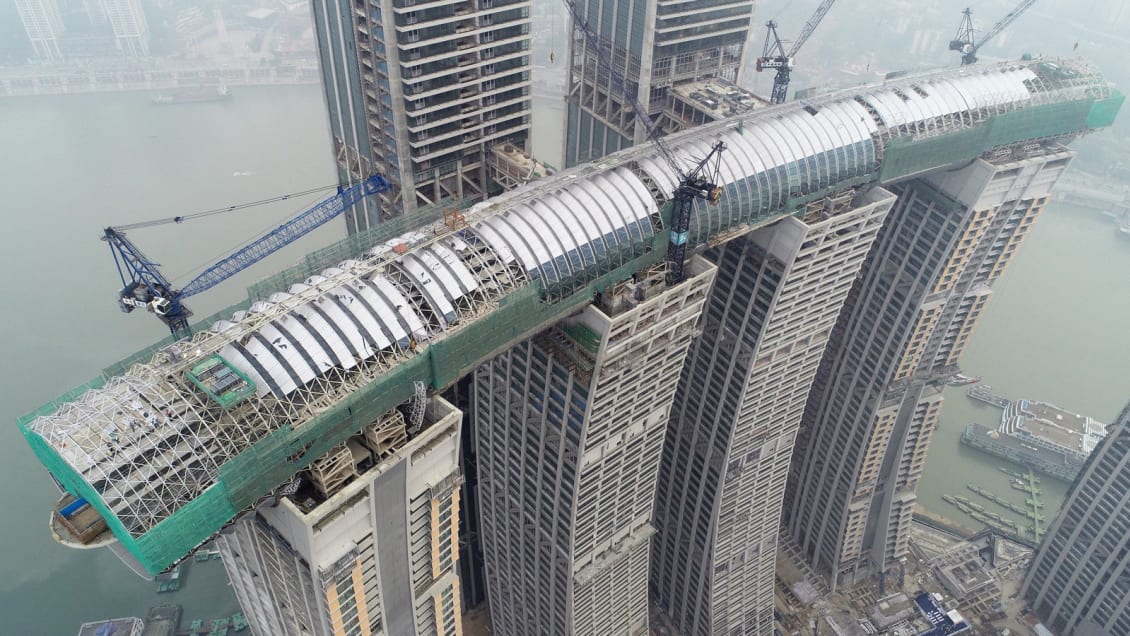Source: CNN (2/9/21)
New ‘future city’ to rise in southwest China
Written by Jacqui Palumbo, CNN

OMA’s masterplan for the International Educational Park in the Chengdu Future Science and Technology City. Credit: Courtesy of OMA
Anew “future city” is set to spring up in southwest China, featuring an urban design intended to combine industry and technology with the pastoral beauty of the countryside.
The 4.6-square-kilometer (1.8-square-mile) site outside Chengdu, the capital of Sichuan province, will be home to multiple new universities, laboratories and offices, according to the architectural firms behind the project, Office for Metropolitan Architecture (OMA) and Gerkan, Marg & Partners (GMP).
Known as Chengdu Future Science and Technology City, the project was unveiled last week via a series of digital renderings. The development is being built in a rural area close to the forthcoming Tianfu International Airport, which is set to open later this year and will make Chengdu only the third Chinese city, after Beijing and Shanghai, to be served by two international airports. Continue reading New future city to rise in Chengdu



/cdn.vox-cdn.com/uploads/chorus_image/image/65335460/118_ZHA_Beijing_Daxing_Int_Airport__Hufton_Crow.0.jpg)







